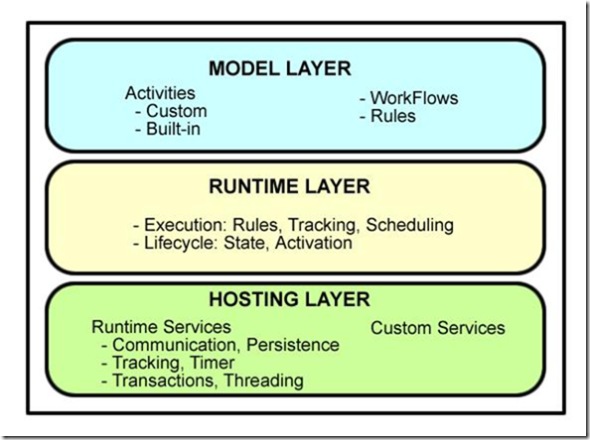本文内容截取自《Windows WorkFlow Foundation: The Next Step and Beyond》
http://www.developer.com/mgmt/article.php/3624951
http://www.developer.com/mgmt/article.php/11085_3624951_2
Architecture
WorkFlow Foundation uses a layered architecture within any application into which it is integrated.
At the top of the model is the location where developers build the code to run a workflow. This layer provides the out-the-box Activities, the model for the construction of custom Activities, and the engine to build rules, as well the plumbing tools to configure and connect the Activities together. The tools to build and work with workflows will take action in this layer.
The Runtime layer ensures the execution aspects of the workflow and contains the mission-critical services required: for example, the state management and persistence service, the rules service that provides policy execution functionality, the scheduler service, and the tracking service.
The Hosting layer is the connecting link between the WorkFlow Foundation and the outside world and provides a package of services (Persistence, Timer, Tracking, Communication) needed to guarantee the control and management of the workflow. Although interfaces needed for this layer can be specially developed if appropriate or desired, WF ships pre-built services that provide all the interfaces necessary to work with FrameWork 2 (and upwards) of .NET.
